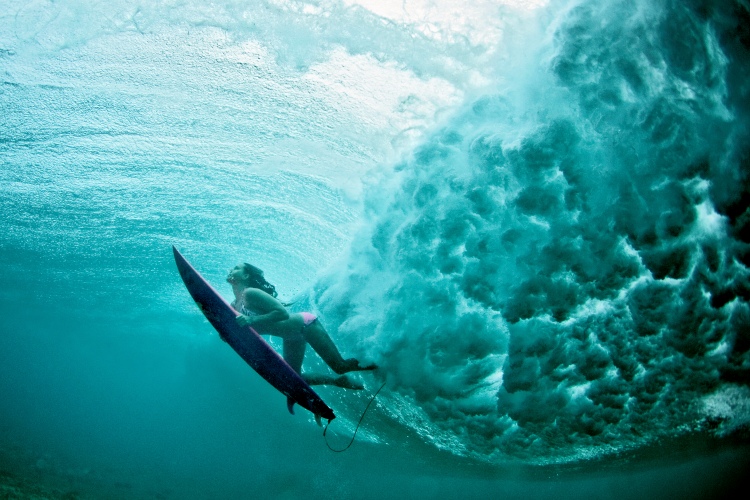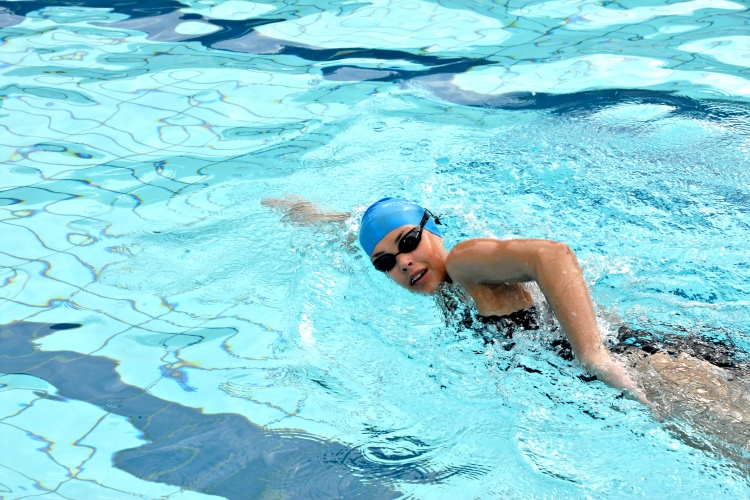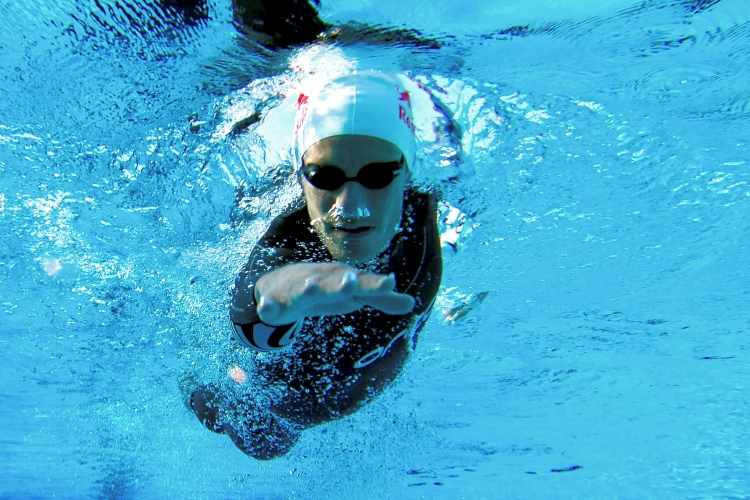You can't always surf. There, it's been said. It's super frustrating - even depressing - but it's true.
No matter what your relationship to surfing is (from weekend city refugees to surf-season nomads to growing up on the North Shore), there will be many reasons on many days why going out just isn't an option.
In the downtime, a lot of surfers don't know what to do with themselves.
When the season comes back around, or the waves kick up again, many find themselves out of shape and struggling to keep up.
It's a disheartening prospect, especially when the highs of making surf progress are so potent and the benefit to physical and psychological well-being so profound.
The most obvious countermeasure to this scenario is simple: swimming.
When conditions - weather or otherwise - make surfing impossible, keeping in shape for surfing is best achieved by staying in the water.
Certain swimming techniques become powerhouse workouts for critical surfing moves, such as paddling and withstanding wipeouts and hold-downs.
Provided you perfect your technique, regular swim sessions can potentially even mean the difference between life and death, providing you with the practiced stamina you need to get out of strong rips or sudden weather changes.
Here's the complete guide to swimming with surf in mind.
When?
Anytime the surf isn't up, you aren't near the beach, or you have an hour to spare.
Consistent training is the key here. Try to pencil in two sessions per week to start with. Increase as you see fit or as your schedule allows.
Where?
While it would be ideal to have more than one body of water to practice in (different types of water have different densities and conditions, so practice in as many as possible conditions your body in a more capable, all-around way), a pool is most likely the most accessible.
Sign up for a gym membership or find one that allows you to pay per session. Your own pool, a friend's, a public, or even perhaps a hotel pool are also good options.
If the sea is nearby, there's no better place to adapt your swimming strength than the place you intend to use it; just be aware of your surroundings and be safe.
What?
Aim to develop a regime that works for you at your current level of swim fitness and increases intensity as your skills develop.
Who?
Your regime should be something you can do alone at any time, but there's nothing wrong with adding a buddy from time to time.
The idea here is that you'll be pushing yourself (and anyone else involved) to the edges of your cardiovascular capabilities, so you will need focus, motivation, and self-awareness.
If having another person in tow helps with this, by all means, buddy up! If not, they hold you back or are distracting - it's probably best to go it alone.

How?
It helps to have some swimming skills already in the bag before beginning.
At the very least, you should be able to perform a freestyle stroke (also known as a front crawl) at a basic level.
If you're not sure, read the step-by-step guide to the front crawl below.
Step 1
Warm Up
Spend 10 minutes or so letting your body acclimatize to the water.
Do as many laps of the swim stroke of your choice at a nice, easy pace as you feel comfortable with.
Keep your breathing steady and unlabored.
Don't push yourself just yet. Be sure to rest for 10-20 seconds between each lap.
Stop before you start to feel any kind of effort. This gets your muscles nice and responsive and your heart and lungs ready for some heavier activity.
Step 2
Push Yourself (With a Focus on Pace and Stamina)
The main bulk of your training should happen now, once you're warmed up.
Spend 30-40 minutes doing the front crawl, resting for 30 seconds between each lap.
You should be swimming at as fast a pace as you can manage, keeping in mind that the pace should be kept up for the entire time.
Your breathing should be heavy, and your heart noticeably pumping.
Step 3
Take It One Step Further
When you feel like you're ready to cool down, you should actually do the opposite.
For 10 minutes or so, swim a series of sprints as fast as you can.
Put more effort into your strokes, take deeper breaths, and push everything just that little bit further.
After each lap, take a slightly longer rest, trying not to exceed 45 seconds before pushing off again.
Fast sprints at the end of a tiring session train your muscles to be responsive and powerful in sudden situations or when conditions in the waves push you beyond your normal capabilities.
Step 4
Cool Down
Do a few easy laps, letting your body relax and breathing return to normal.
Extras
It's a good idea to mix up your swim training whenever you can to help prepare your body for unexpected circumstances while surfing.
Underwater laps, including sprints, are excellent for building lung capacity, which you'll need for very big hold-downs and repeated duck dives.
Treading water for as long as you can builds lower body strength and stamina; it is useful when separated from your board or helping another surfer in distress.
Try treading hands-free for maximum benefit.
Mixing up your stroke during the main body of your workout is also beneficial. Try interspersing the front crawl with the breaststroke every two laps.
How you breathe during aquatic exertion should also be considered.
During freestyle swimming, you can choose to breathe from the same side each time a stroke is complete or breathe bilaterally, switching sides and breathing on every third stroke.
Another technique, called hypoxic breathing, further restricts the intake of air, forcing the body to retrain itself to use what it has stored in the lungs.
Breathe every seventh stroke to help the body create more oxygen-carrying hemoglobin in the blood.

The Front Crawl Explained
Perhaps the best swimming technique for building key paddling muscles - shoulders, back, and triceps - as well as building lung and heart capacity, the front crawl is where it's at for surfers.
The main body of your swim regime should consist of this stroke. Learn to get more from your swim training by perfecting your technique.
Face down on the surface of the water and push off from the wall with your feet.
Lead with your hands - palms down with one on top of the other - with arms beside your ears.
Your push-off should result in a nice, powerful glide with your spine and neck straight through to the top of your head.
As you push off, you should flex your hips and knees gently, allowing an initial kick to power you through the first glide.
Take your first stroke with your bottom hand.
With fingers together and palm cupped, begin to "dig" the water and push it past the hip.
Once the arm is straight along your side, bend your elbow and lead with it toward the surface of the water.
If this is your breath stroke, turn your head to the side of your uplifted arm and breathe deeply through the mouth.
Swing your arm palm-down back around toward the front and re-enter the water with a smooth, fingertip-leading arc.
Repeat the stroke on the opposite side with the other hand, this time keeping your head in the water, face-down.
Your kicks should be relaxed, coming from the hips, with knees slightly bent and ankles loose.
Are you a surf fitness fan? Discover the best workout equipment for surfers.
